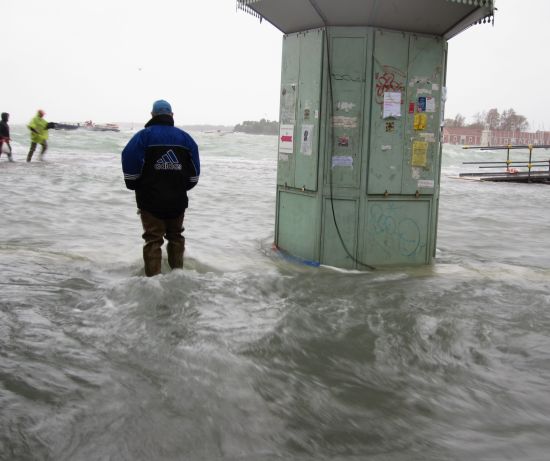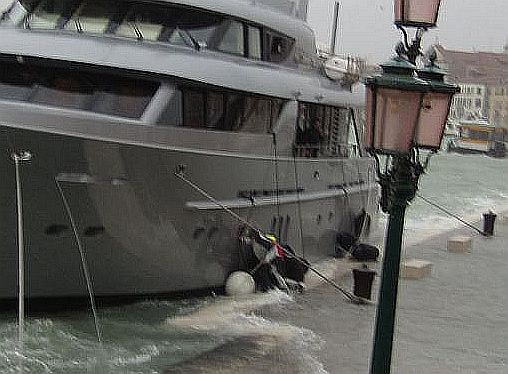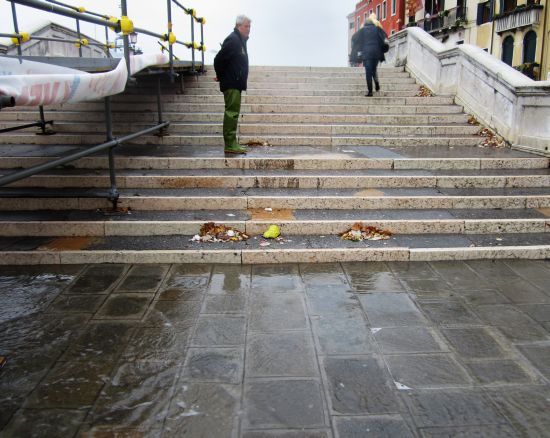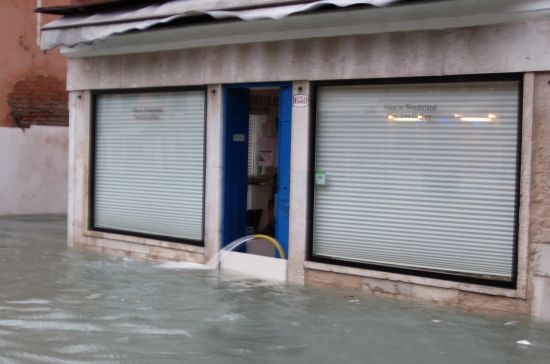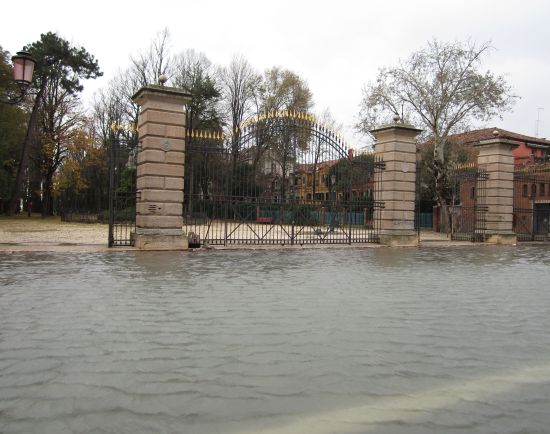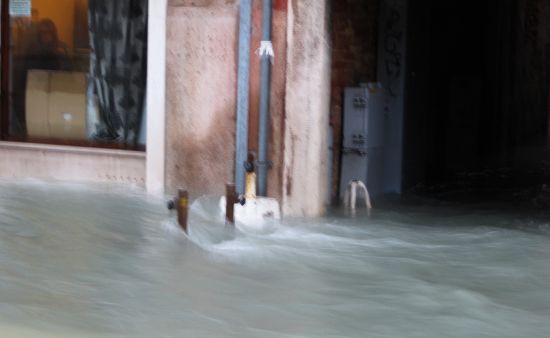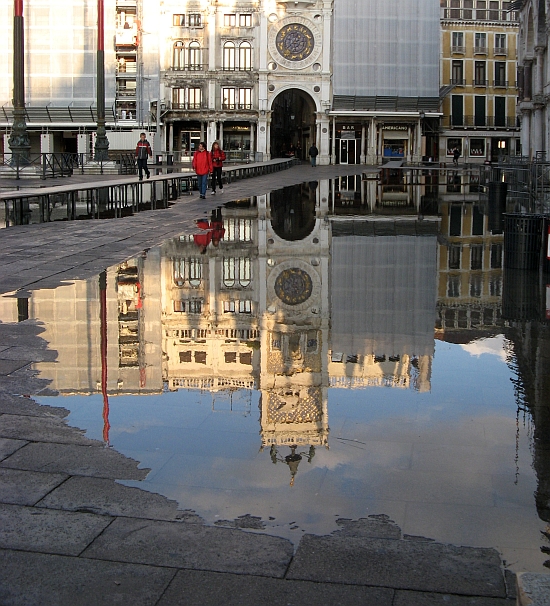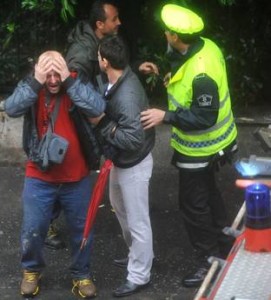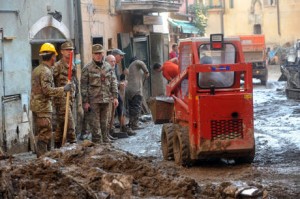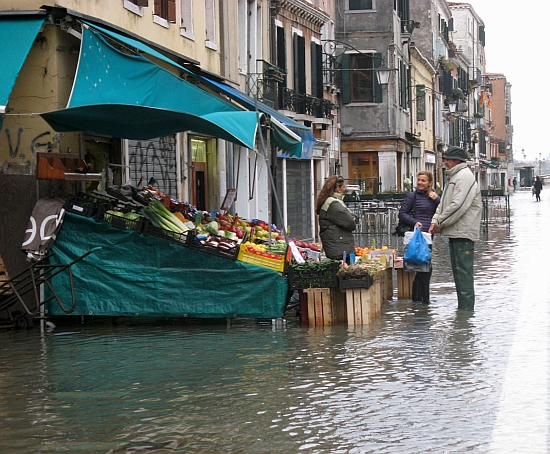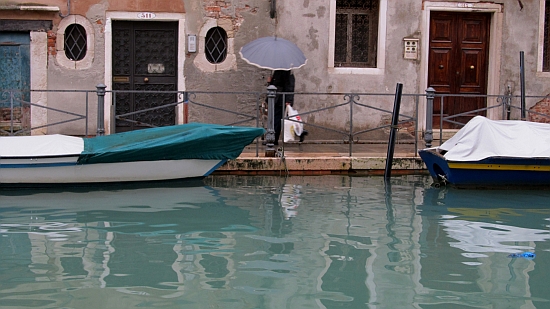
Saint Martin’s day yesterday was a lot more emphatic than it usually is with the banging of pots and pans by kids on a quest for candy. In addition to the kids, and the traditional cookies, we got acqua alta — the second visitation of the season, and it was noticeable. The news tonight reported that it had reached 149 cm (4.8 feet) above sea level, the sixth highest since 1872. (The highest on record remains November 4, 1966, which was 190 cm/6.2 feet).
Water didn’t enter our hovel, but it didn’t miss by much.
We heard the sirens sound, as expected, two hours before the peak predicted for 8:20 AM. There were three extra tones, which indicated an anticipated maximum of 120 cm (3.9 feet). Not long after that, we heard the sirens again, this time with four tones (140 cm/4.5 feet). At that point we sat up and began to pay attention.
What made this event more interesting than usual wasn’t simply the height of the water, it was the speed of the wind — I mean, the force of the scirocco, which is always a major factor in keeping the lagoon in when it wants to go out. The wind was blowing around 40 km/hr (24 mph), with gusts of 55 km/hr (34 mph).
All this was part of a major weather system that hit large areas of Italy leaving real drama and destruction in its wake — mudslides, blocked roads, fallen trees, and more mayhem than we could ever manage here, thank God.
Naturally we went out to buy the newspaper and look around the neighborhood. I don’t usually take pictures of acqua alta anymore, as they have long since become repetitive. But this was toward the unusual side of the daily scale of nuisances.
Of course I’m glad the water didn’t exceed our top step, but if it had, I’d still be alive. This is the first of my annual pleas to the world to ignore the wailing and gnashing and published or broadcast claims that the city has been driven to its knees. I do not consider the fact that a tourist has had wade across the Piazza San Marco carrying her suitcase on her head an indication of anything larger than a temporary annoyance — it certainly does not make even the tiniest wail begin to form anywhere in my thorax. Anyone who has been dealing with Hurricane Sandy and its aftermath — not to mention people in stricken areas of Tuscany and Umbria — would find the suggestion that a large but temporary inconvenience could be compared to life-threatening catastrophe not only ridiculous, but offensive. By noon the water was all gone and the streets were drying off.
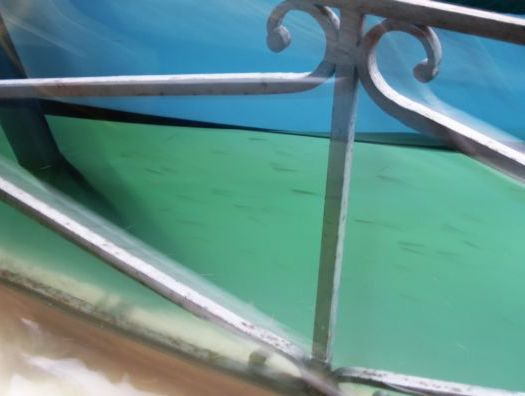
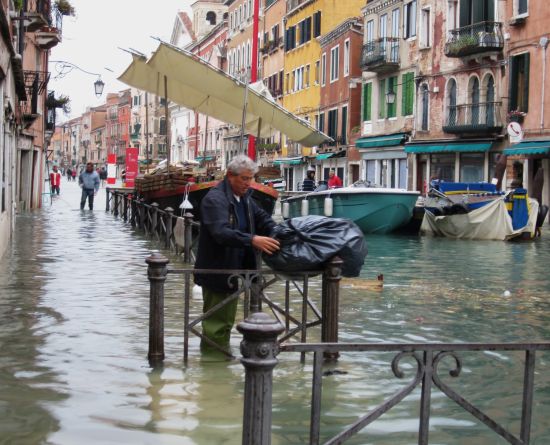
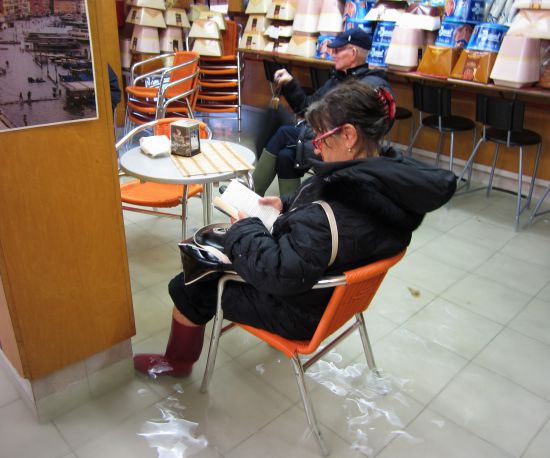
-
Many of the shops along via Garibaldi were being pumped out — it was like walking around the gardens of the Villa d’Este with all the fountains.
- I was struck by yet another illustration of the fact that Venice is not perfectly flat. We were sloshing along in our hipwaders, while just beyond the gate there was high ground. When the acqua isn’t alta, you’d think it was all level.
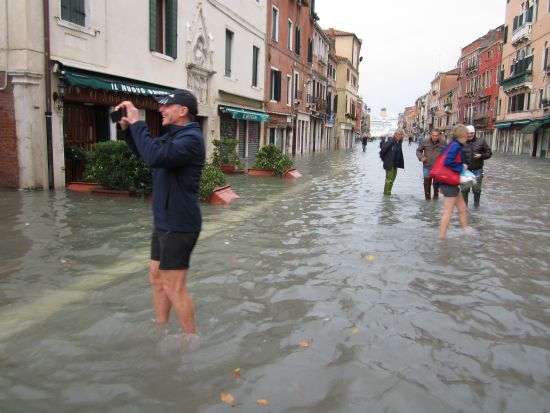
- As we got closer to the Riva dei Sette Martiri facing the lagoon, the reality of the tide going out began to really mean something. The combined power of the water channeling out of the Grand Canal and the Giudecca Canal toward the sea hit the embankment approximately at the end of via Garibaldi. Lino said he’d never seen anything like this, and he’s seen every acqua alta in the past 70 years. Walking against this was like walking against an Alpine torrent. (Apologies for the blur — the wind and rain were also picking up force here.)
